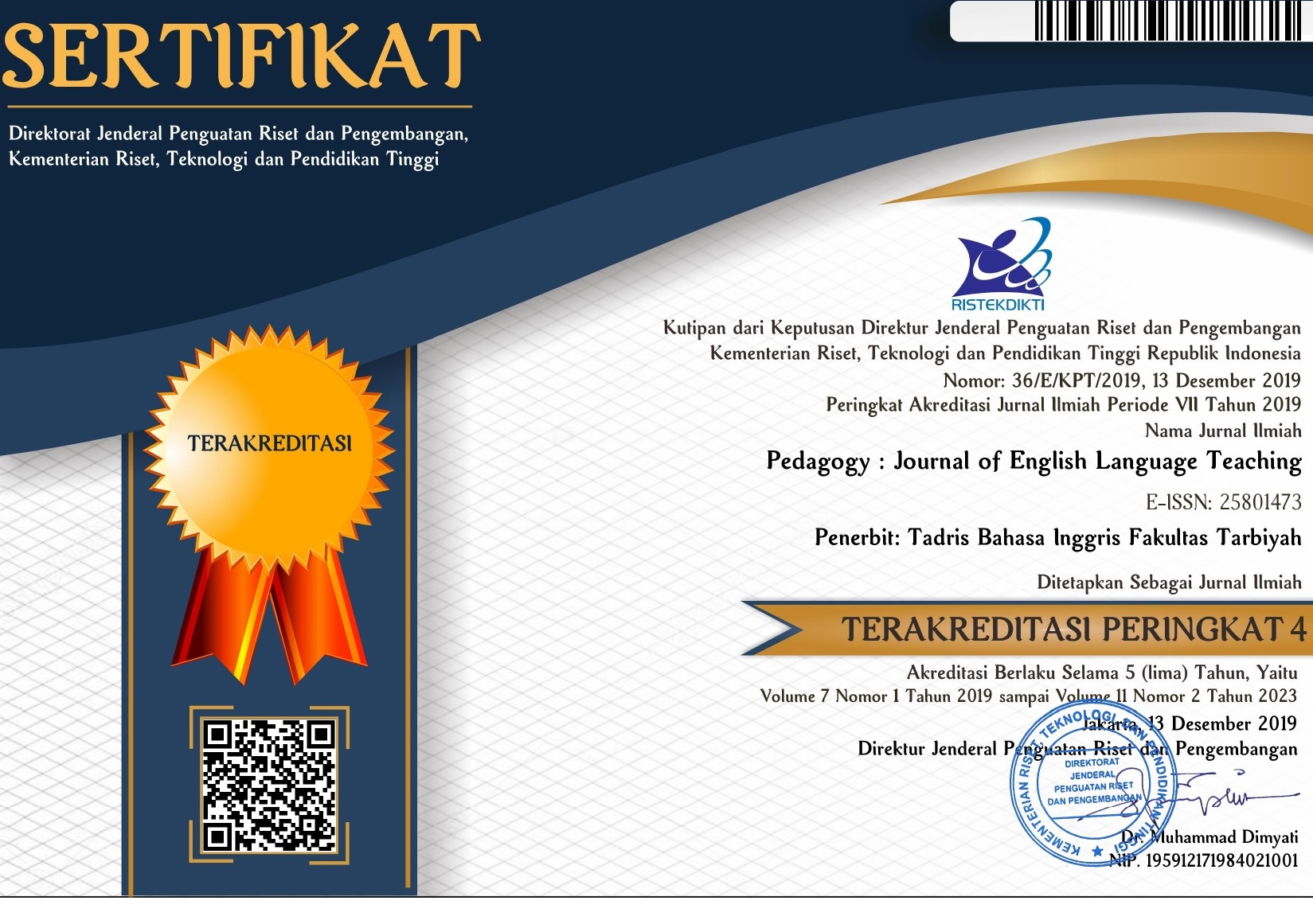The Realization of Code Switching: An Analysis of the Novices of Pre-Service Teachers in EFL Classroom
DOI:
https://doi.org/10.32332/pedagogy.v8i1.2203Keywords:
Code-Switching, Linguistics, Pre-Service Teachers (novices)Abstract
Code-switching is one of the linguistics phenomena in daily activities. The study aims at focusing on the novices of pre-service teachers’ who use code-switching in the EFL classroom. It also explains why novices use code-switch in the learning process. The study used a qualitative approach. The data was recorded and transcribed to analyze why and how code-switching was used by nine novices in the classroom of MA NU Batang. The analysis of the classroom revealed that nine novices used code-switched in categorizing the forms of the utterances. The result shows that: (1) There are two ways in which the novices use code-switching in teaching and learning process, including form (word, phrase, and sentence) and function and condition were 132 or 55% utterances of code-switching (2) The novices use code-switching from L2 to L1 including form (word, phrase, and sentence) in learning activities. (4) The reason that the novices use code-switching in the classroom is to help the students when they explain in difficult words, phrases, or sentences the lesson. (5) The use of code-switching makes their students easier to understand what they are learning. Therefore, code-switching has a good effect in EFL classrooms to facilitate teaching and learning.
















